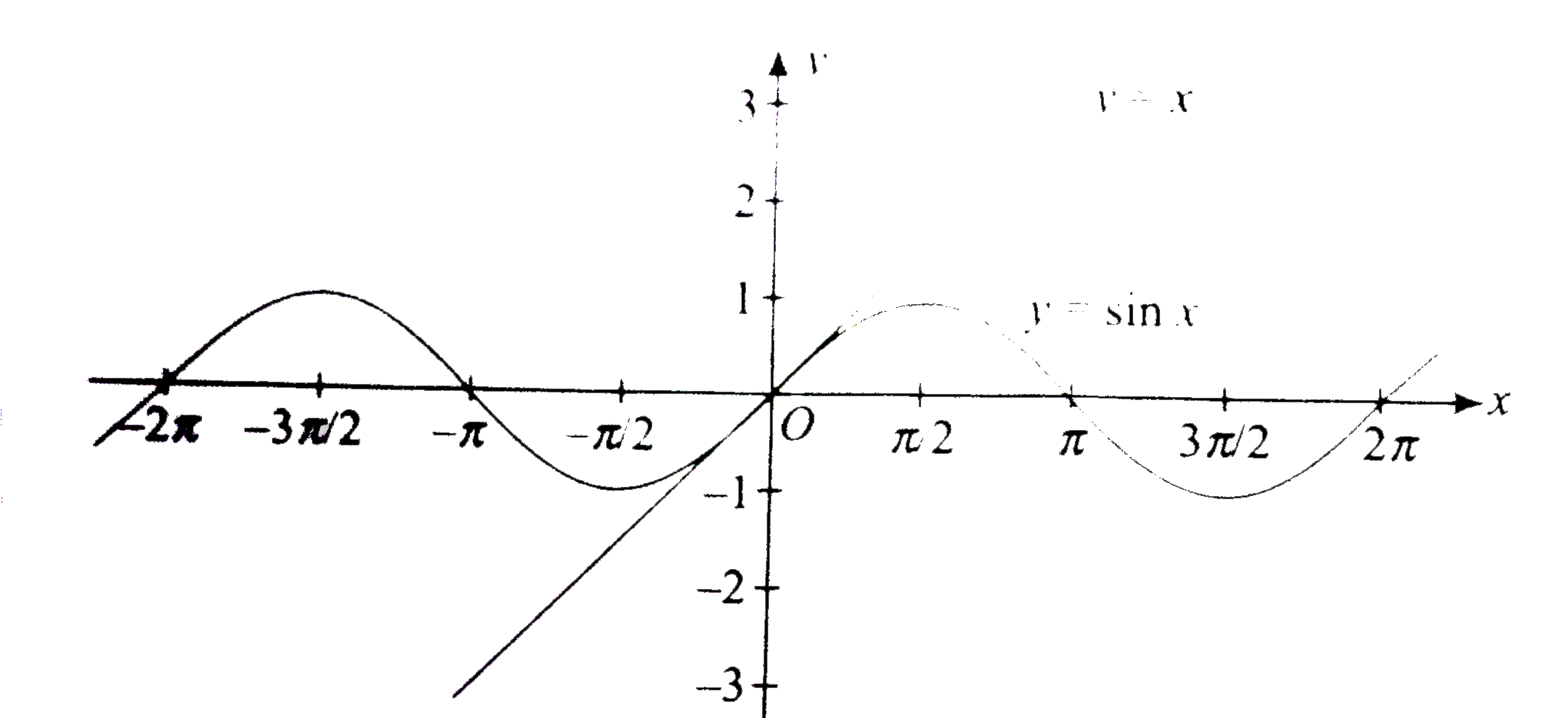Prove that where represents the greatest integer function.
See the graphs of y=x and in the following figure.

From the figure when ,graph of y=x is above the graph of
i.e.,
When , graph of y=x is below the graph of
i.e., (as x is negative)
Thus,
Topper's Solved these Questions
- BOOK - CENGAGE ENGLISHCHAPTER - LIMITSEXERCISE - Solved Examples15videos
LIMITS
- BOOK - CENGAGE ENGLISHCHAPTER - LIMITSEXERCISE - EXERCISE 2.110videos
LIMITS
- BOOK - CENGAGE ENGLISHCHAPTER - JEE 2019EXERCISE - Chapter 109videos
JEE 2019
- BOOK - CENGAGE ENGLISHCHAPTER - LINEAR COMBINATION OF VECTORS, DEPENDENT AND INDEPENDENT VECTORSEXERCISE - DPP 1.210videos
LINEAR COMBINATION OF VECTORS, DEPENDENT AND INDEPENDENT VECTORS
Similar Questions
Prove that [limx→0tan−1xx]=0, where [.] represents the greatest integer function.
View SolutionEvaluate : [limx→0sinxx], where [⋅] represents the greatest integer function.
View SolutionEvalute [limx→0sin−1xx]=1, where[⋅] represets the greatest interger function.
View SolutionEvaluate : [limx→0tanxx], where [⋅] represents the greatest integer function.
View SolutionProve that [limx→0sinx.tanxx2]=1,where [.] represents greatest integer function.
View SolutionEvaluate: [(lim)x→0tanxx] where [.] represents the greatest integer function
View SolutionProve that limx→2[x] does not exists, where [.] represents the greatest integer function.
View Solutionlimx→0[(1−ex)sinx|x|] is (where [.] represents the greatest integer function )
View SolutionEvaluate limx→2+[x−2]log(x−2), where [.] represents the greatest integer function.
View SolutionEvaluate: (lim)x→0sinxx,where[.] represents the greatest integer function.
View Solution

